The Exorcist boss tells fans upset by gay kiss to f**k off
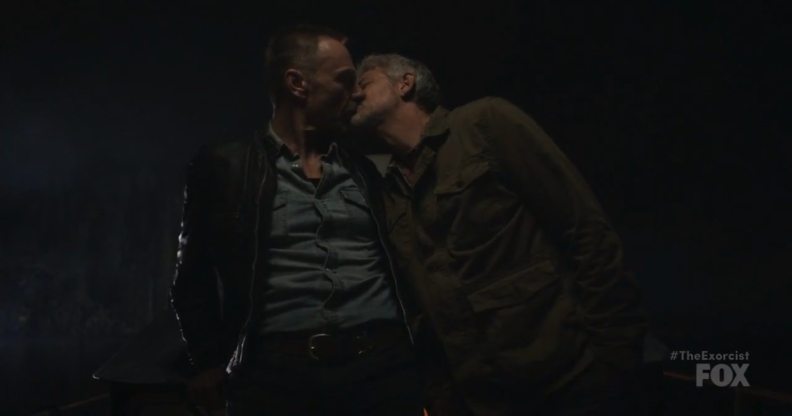
The showrunner of Fox TV series The Exorcist has told fans upset about a gay kiss exactly where they can go.
The Fox show, which recently returned for a second season, is a successor to the popular 1973 horror film.
A recent episode of the show confirmed that one of the main characters, former priest Father Marcus Keane (Ben Daniels), is bisexual.
The character was shown kissing a man, provoking an angry response from some of the show’s fans who did not realise the character’s sexuality.
But asked about the backlash, showrunner Jeremy Slater had a rather direct and profane response.
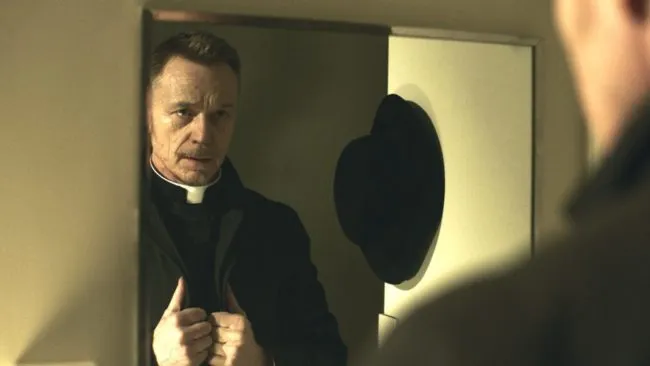
Father Marcus
Speaking to Sci-Fi Bulletin, he said: “I saw a couple of homophobes on Twitter and my response is, good.
“F**k you. I’m glad you didn’t like it, I’m glad it ruined the show for you. You shouldn’t have good things in your life.
”If a homophobe can’t watch the show any more because one of the characters is gay, then I’m glad something good has come out of it.
“This is 2017 and we still have people throwing temper tantrums on line because they don’t want to see gay characters. I think it’s the last gasp of a certain breed of dinosaur that’s on the way out, and let them kick and scream as they go.”
Mr Slater emphasised that most fans reacted positively to the kiss.
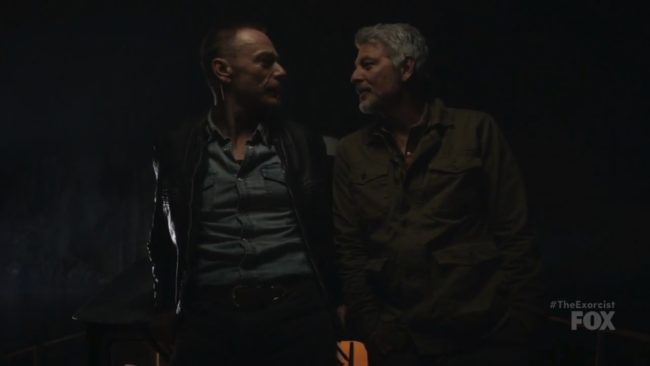
The TV boss said: “The response to that moment was 99% positive, from what I saw, and I think the moment meant a lot to a lot of viewers, particularly viewers who aren’t necessarily used to seeing gay representation on TV with older characters that’s treated with the sensitivity that Ben and Christopher [Cousins] both brought to that performance.
“They did such a lovely job and really sold it so I do think it was earned as a character moment, and a natural culmination.”
He pointed out: “We’ve said from the beginning that Marcus is a bisexual character, which is pretty rare on television in general and certainly on network television, where everyone has binary definitions of gay or straight.
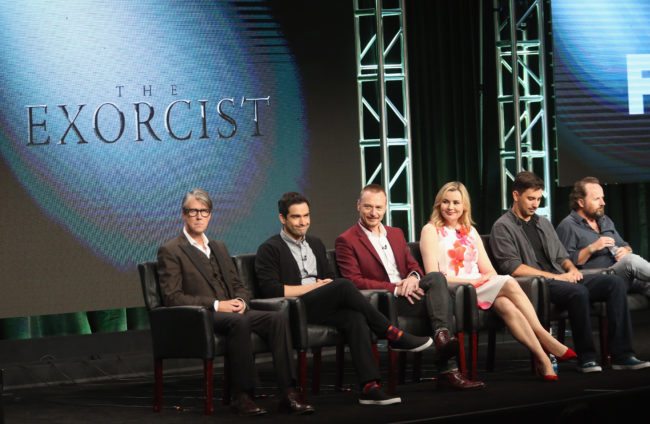
The Exorcist cast with Jeremy Slater, second from right (Photo by Frederick M. Brown/Getty Images)
“Getting to explore all facets of his sexuality and character is really something that we didn’t get a chance to do in season 1, not because we didn’t want to, but because we didn’t have the time to do it.
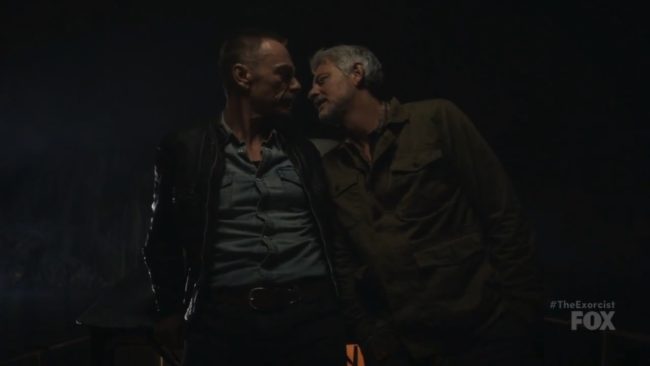
“[In the first season] we had little moments of flirting, a little flirty glance in a bar, to clue the audience that this thing that you think you’re seeing is actually there.
“I knew coming back to season 2 that it was very important and we had to work this into the plot in a natural way and do justice to it. We didn’t want to be coy and just dance around his sexuality for another season.”
GLAAD recently released a report on LGBT diversity on TV.
While the report found the highest percentage of LGBTQ regulars on broadcast television (6.4%) since GLAAD began tracking broadcast series regulars, the report brought to light the continued lack of diversity among LGBTQ portrayals on television.
In all forms of television that GLAAD tracks, LGBTQ characters are still predominantly white (77% of LGBTQ characters on streaming, 62% on broadcast, 64% on cable). The majority of LGBTQ characters are men (55% of LGBTQ characters on broadcast), and cisgender.
There are only 17 transgender characters across all three platforms tracked – broadcast, cable, and streaming originals.
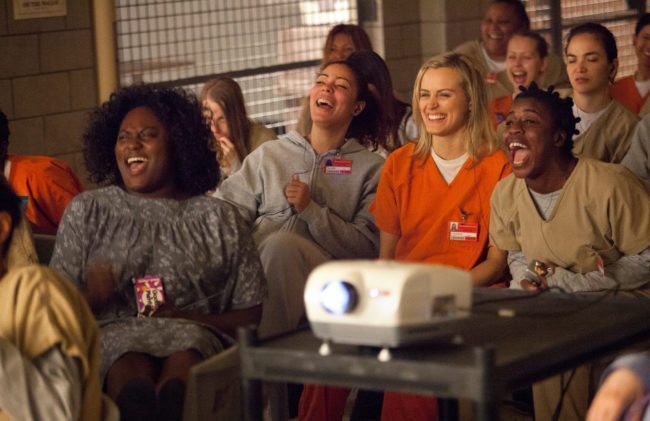
Orange is the New Black leads the way in LGBT representation (Netflix)
Bisexual characters make up 28 percent of the LGBTQ characters tracked across all platforms (broadcast, cable, streaming originals), a slight decrease from last year.
Sarah Kate Ellis, President and CEO of GLAAD, said: “As LGBTQ acceptance in government and the broader American culture reverses course, television is a critical home for LGBTQ stories and representation matters more than ever.
“At a time when the Trump administration is trying to render LGBTQ people invisible, representing LGBTQ people in all of our diversity in scripted TV programs is an essential counterbalance that gives LGBTQ people stories to relate to and moves the broader public to support LGBTQ people and families.”

